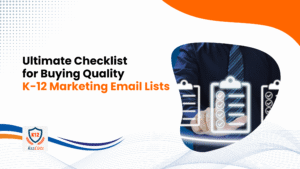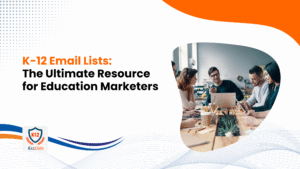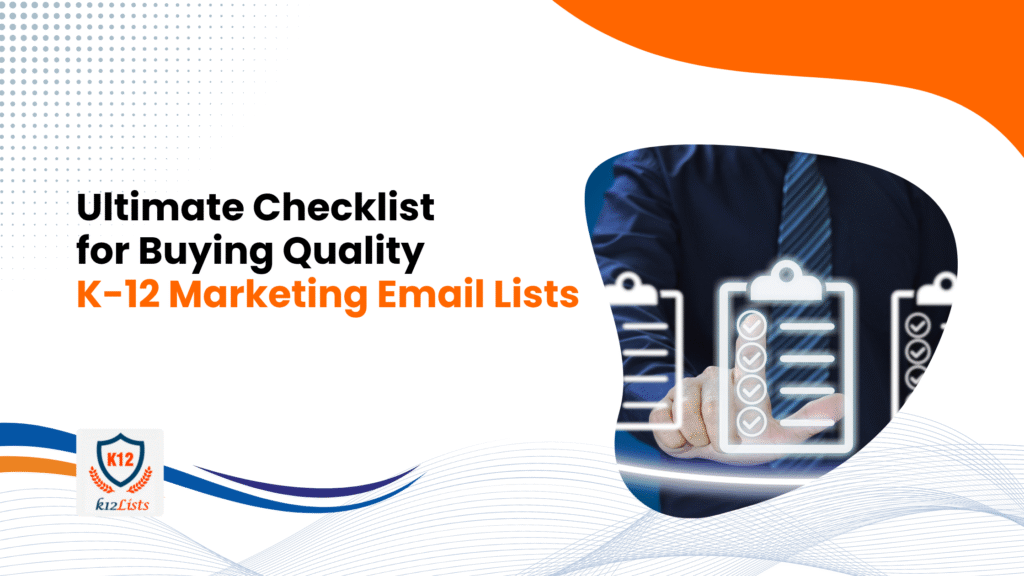When it comes to marketing to the education sector, one of the biggest decisions organizations face is how to reach key decision-makers in K-12 schools. Two common approaches are purchasing K12 email lists or buying school directories. While both offer access to contact information, the real question lies in the return on investment (ROI). Which option provides better value, engagement, and long-term results?
In this blog, we’ll explore the key differences between K12 email lists and school directories, and analyze which strategy yields better ROI for education marketers, EdTech companies, curriculum developers, school supply vendors, and more.
Understanding the Basics: What Are You Buying?
Before comparing ROI, it’s essential to define what each product offers.
What Is a K12 Email List?
A K12 email list is a curated database of verified contact details, primarily email addresses, of K-12 educators and decision-makers across public, private, and charter schools. These lists are typically categorized by:
- Job titles (e.g., superintendents, principals, IT directors, teachers)
- School type or district
- Location (state, city, ZIP code)
- Grade level (elementary, middle, high school)
Providers like K12 Lists offer permission-based, regularly updated lists that can be used for direct outreach, email campaigns, and lead nurturing efforts.
What Is a School Directory?
A school directory is often a general contact list published by schools or districts. It typically includes:
- Physical addresses
- School names
- Phone numbers
- Main office email addresses (not individual contacts)
- Administrative staff names (sometimes without direct emails)
Directories may be free or available for purchase, but the data is often not formatted for marketing purposes.
ROI Factor #1: Data Accuracy and Deliverability
Email Lists Win.
One of the biggest challenges in outreach is reaching the right person. An email list from a trusted provider comes with high data accuracy and verified contacts, which results in better deliverability rates.
In contrast, school directories often contain outdated or generic emails (e.g., [email protected]). These inboxes are usually managed by assistants or ignored entirely, making engagement difficult.
Bottom Line: Better deliverability means fewer bounced emails and higher campaign success rates, boosting your ROI.
ROI Factor #2: Targeting Capabilities
K12 Email Lists Provide Precision Targeting.
One of the main advantages of using a K12 email list is audience segmentation. Need to reach only STEM teachers in California? Or superintendents in large urban districts? Email lists allow for laser-focused targeting.
With school directories, you’re limited to broad-level contacts—if names and roles are even available. They do not allow you to segment by subject area, seniority, or purchasing authority.
Precision equals performance. A campaign sent to relevant contacts will always outperform a generic one.
ROI Factor #3: Time and Resource Investment
Email Lists Save Time.
Imagine manually combing through hundreds of school directories, identifying names, finding email formats, and building your own list. It’s labor-intensive and prone to errors.
With a ready-to-use K12 email list, your team can skip data collection and go straight to campaign execution. Most lists from K12 Lists are ready for CRM or email automation platforms, streamlining your workflow.
Faster outreach = quicker results = higher ROI.
ROI Factor #4: Compliance and Permission
Ethical Marketing Starts with Permission-Based Lists.
Reputable email list providers comply with CAN-SPAM, GDPR, and other email marketing laws, offering opt-in databases for legitimate marketing use. This ensures you’re not just reaching contacts, but doing so legally and ethically.
Directories, on the other hand, do not guarantee permission. Using those contacts for mass marketing can put your brand at legal risk and hurt your reputation.
The cost of non-compliance outweighs any short-term savings.
ROI Factor #5: Engagement and Conversion Rates
Email Lists Drive Higher Engagement.
With targeted contacts who are more likely to be interested in your offering, email lists generate higher open rates, click-through rates, and conversions. These contacts are pre-vetted for relevance, so your messaging lands with the right people.
Compare that to generic emails scraped from directories, which often go unopened or are blocked by spam filters.
More engagement = better return on every dollar spent.
ROI Factor #6: Long-Term Value
Email Lists Support Ongoing Campaigns.
A well-maintained email list can be used for multiple campaigns, retargeting, and drip marketing. It becomes a valuable asset for your sales and marketing teams over time.
Directories, however, offer static information with limited reuse potential. Once you’ve extracted what you can, it holds little long-term value.
Lists can be nurtured. Directories can’t.
Cost Comparison: Upfront vs Long-Term Returns
At first glance, school directories may seem like the more affordable option. However, when factoring in the hidden costs of manual list-building, low engagement, and missed opportunities, directories often end up being more expensive in the long run.
In contrast, investing in a K12 email list provides faster access to high-quality leads, reducing your cost-per-lead and increasing the return on ad spend (ROAS).
When Might a School Directory Be Useful?
To be fair, school directories aren’t entirely obsolete. They may be useful for:
- General research
- Local outreach where relationships already exist
- Phone-based campaigns
But when your goal is to generate measurable ROI through digital channels, they simply can’t compete with the efficiency and performance of a targeted email list.
Final Verdict: K12 Email Lists Offer Superior ROI
When considering outreach to schools and educators, K12 email lists are the smarter investment. They provide:
- Verified, accurate contact information
- Segmentation and targeting options
- Ready-to-use formats for marketing
- Compliance with data privacy laws
- Better engagement and conversion rates
- Long-term reusability
In contrast, school directories require manual work, offer limited contact quality, and often yield poor campaign performance.







